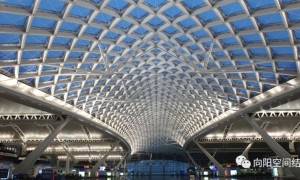装配式建筑让造价变得透明
连接件很贵的
都是省着用,尽量选择可靠高效的替代方案
先看高大上的方案,再看省钱的方案
Q.
What is a connector?
A.
Structural connectors are made out of steel, and are engineered to connect and strengthen the frame of a home. Reinforcing the frame of a home with structural connectors helps the home resist damage caused by earthquakes, high winds and hurricanes. Framing materials secured with connectors are much stronger than if secured only with nails (called toe-nailing).
Connectors come in all shapes and sizes, and have a variety of names, such as joist hangers, holdowns and hurricane ties. Homeowners don’t typically see connectors in their homes because they are covered up behind the walls.
Q.
What is a fastener?
A.
Fasteners typically refer to nails, screws, bolts or anchors. Fasteners are used with connectors to attach framing materials together, such as wood, masonry and concrete.
Q.
What is a shearwall?
A.
Shearwalls are reinforced walls within a home that have been engineered to help resist the shear (racking) forces that are caused by high winds or lateral forces that are caused by earthquakes. Shearwalls are typically constructed by attaching wood sheathing and holdown connectors to a section of the wood framing along a wall. Pre-manufactured shearwalls, such as Wood and Steel Strong-Wall® shearwalls, are frequently used in homes as they come pre-assembled and ready for installation.
Q.
What is a continuous load path and why is it important for a home?
A.
A continuous load path is a method of construction that uses a system of wood, metal connectors, fasteners (like nails and screws) and shearwalls to connect the structural frame of the house together. It ties the house together from the roof to the foundation. A continuous load path is important because it helps redistribute outside pressures or forces caused by earthquakes and high winds, transferring these external forces from the frame to the foundation, which is securely anchored into the ground. A home with a continuous load path is much better equipped to withstand the strong forces caused by high winds, tornadoes, hurricanes and earthquakes.
再看省钱的方案









